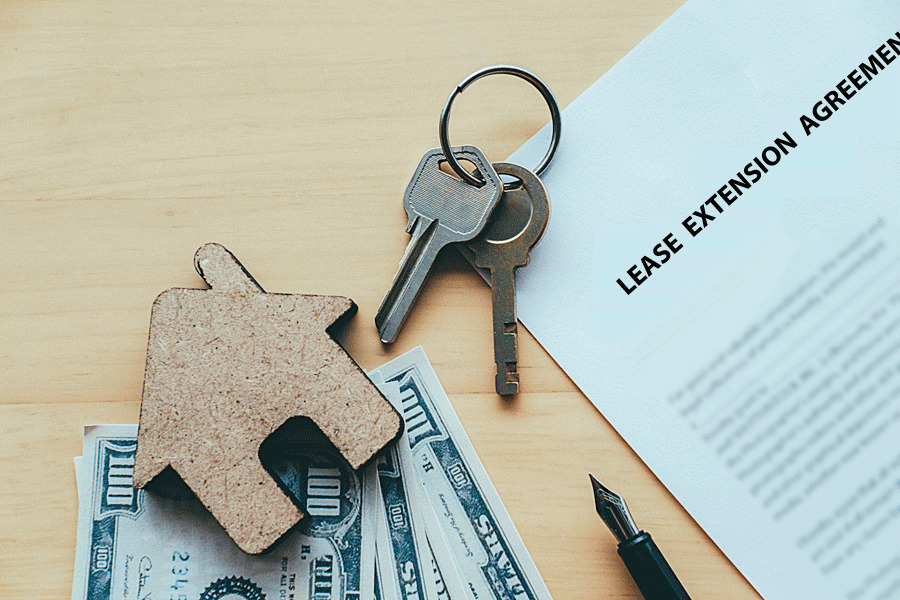A Room Rental Agreement is a written legal document used to rent out an unoccupied room, part, or space in a property to a new tenant.
The agreement can be used to sublet or rent a room or apartment that the homeowner (principal tenant) is not using. The agreement outlines the duties, expectations, and contractual obligations of both parties during the tenancy.
The agreement has to be signed for it to be implemented and legally binding. It must also be written, for written agreements are more legally enforceable than oral agreements. Legally, it protects the primary tenant from any breach of rental terms made by the secondary tenant.
The agreement should incorporate the terms of the original lease. The primary tenant remains obligated to the property owner in accordance with the original lease. Through the agreement, the primary tenant can raise the rent for the empty room and add it to their monthly rent. Also, it enables tenants to rent out a room to unrelated individuals using a separate agreement for each tenant. Lastly, it is easier to evict non-compliant tenants with the agreement.
Other names used to refer to the agreement are:
- Sublease agreement
- Room lease agreement
- Agreement for renting a room
Rental Agreement: Template and Examples
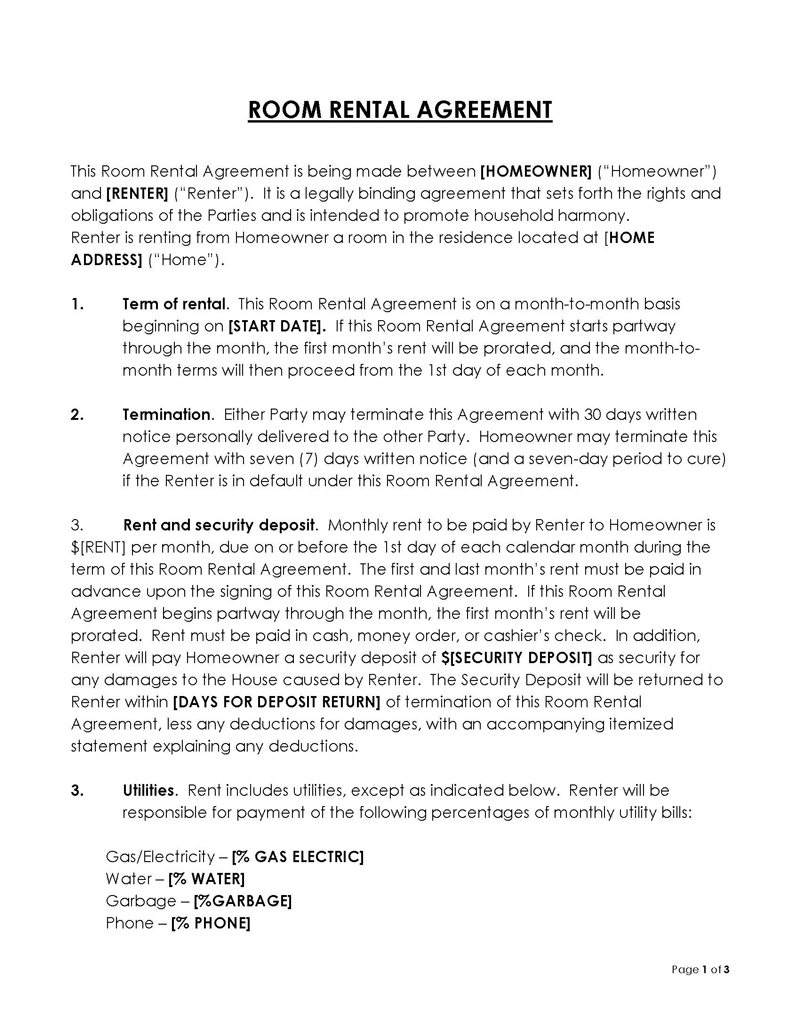
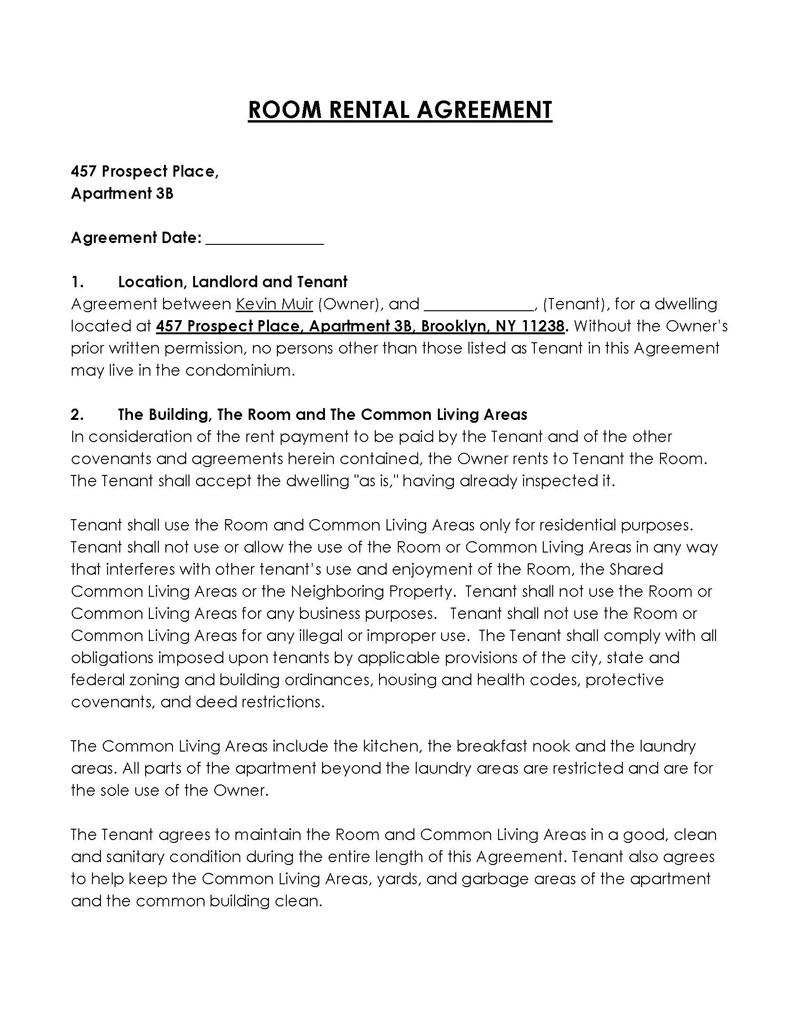
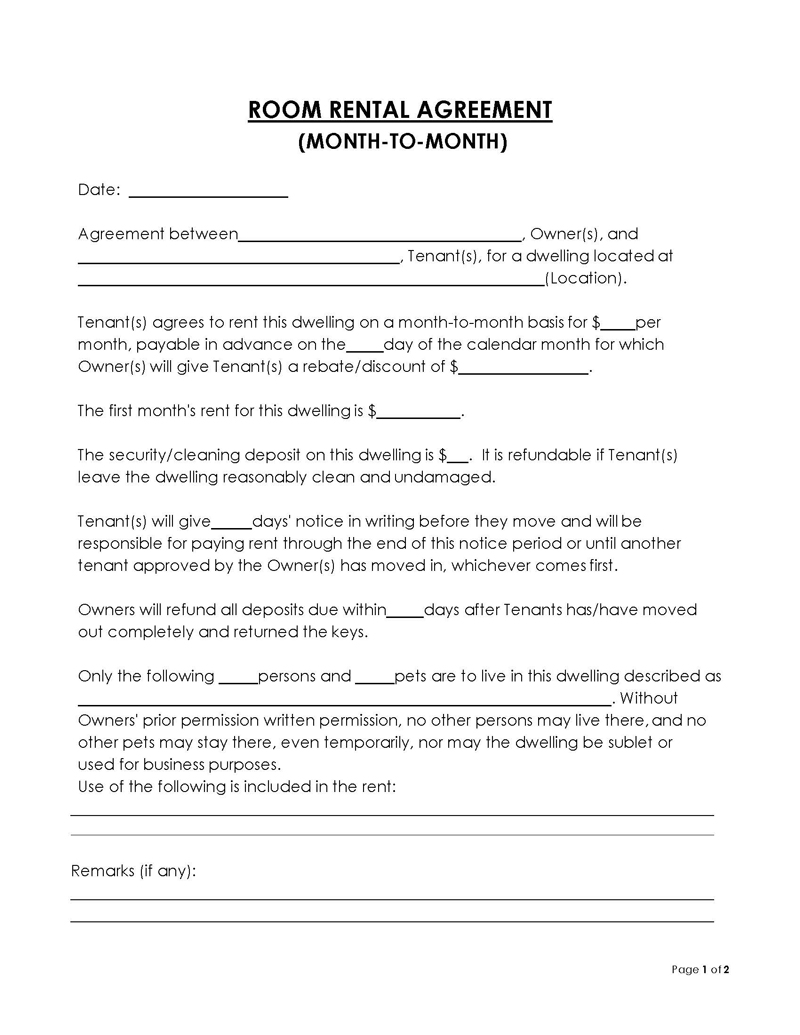
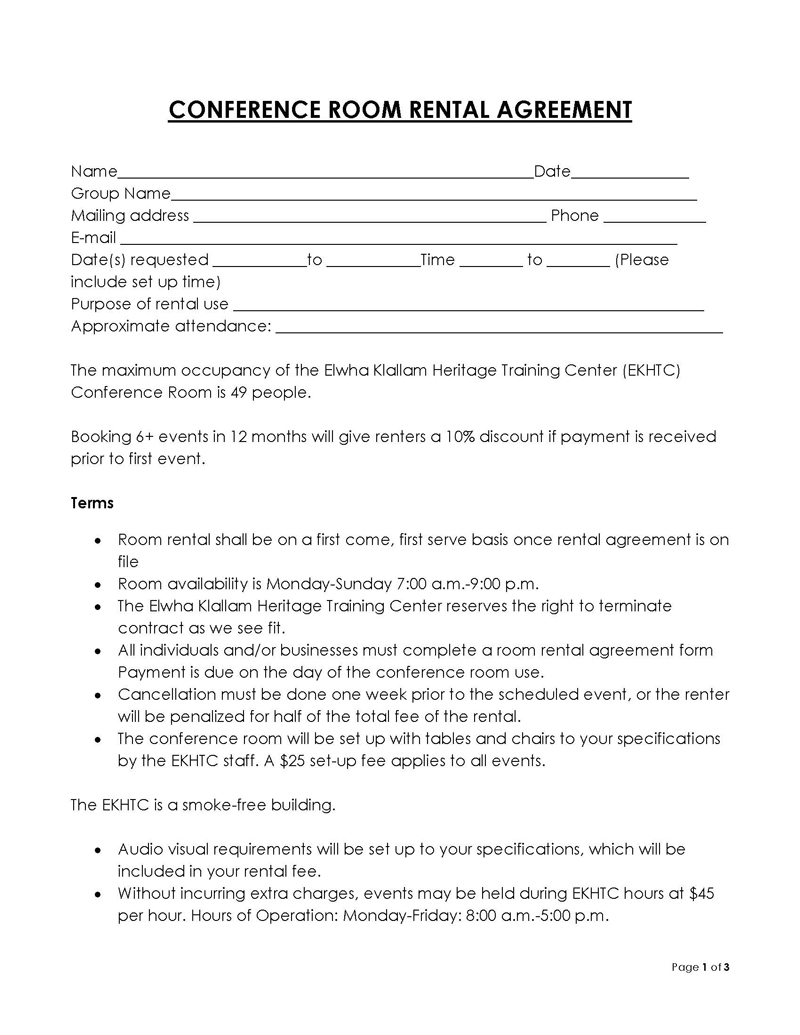
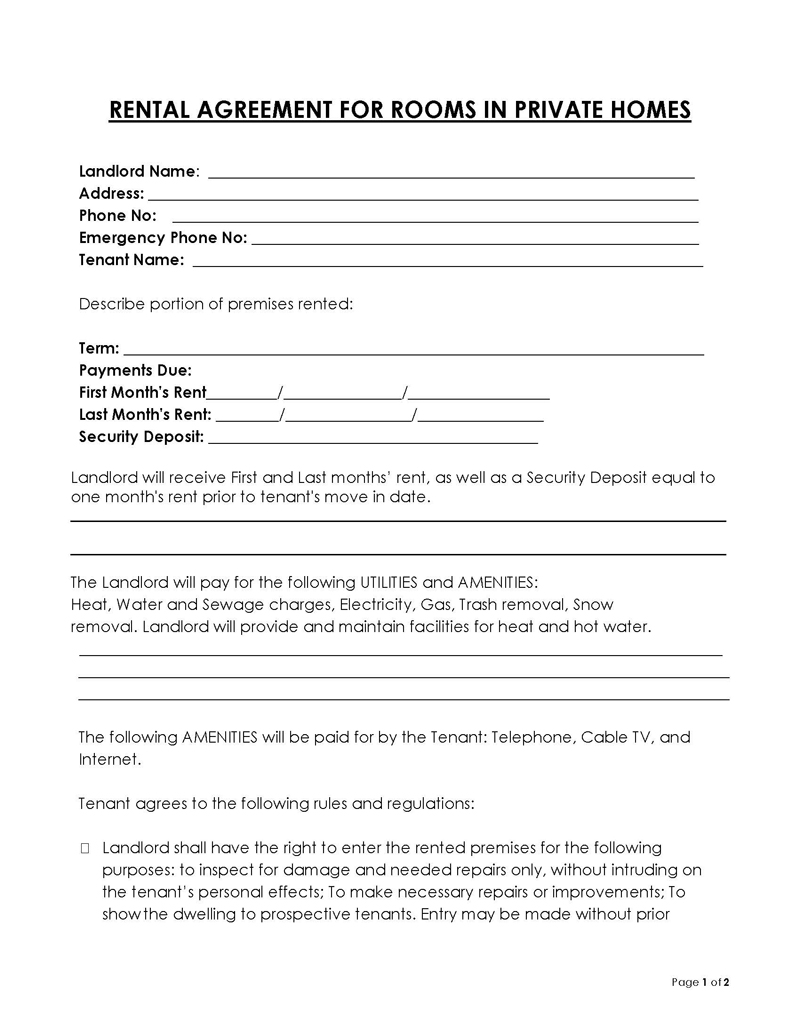
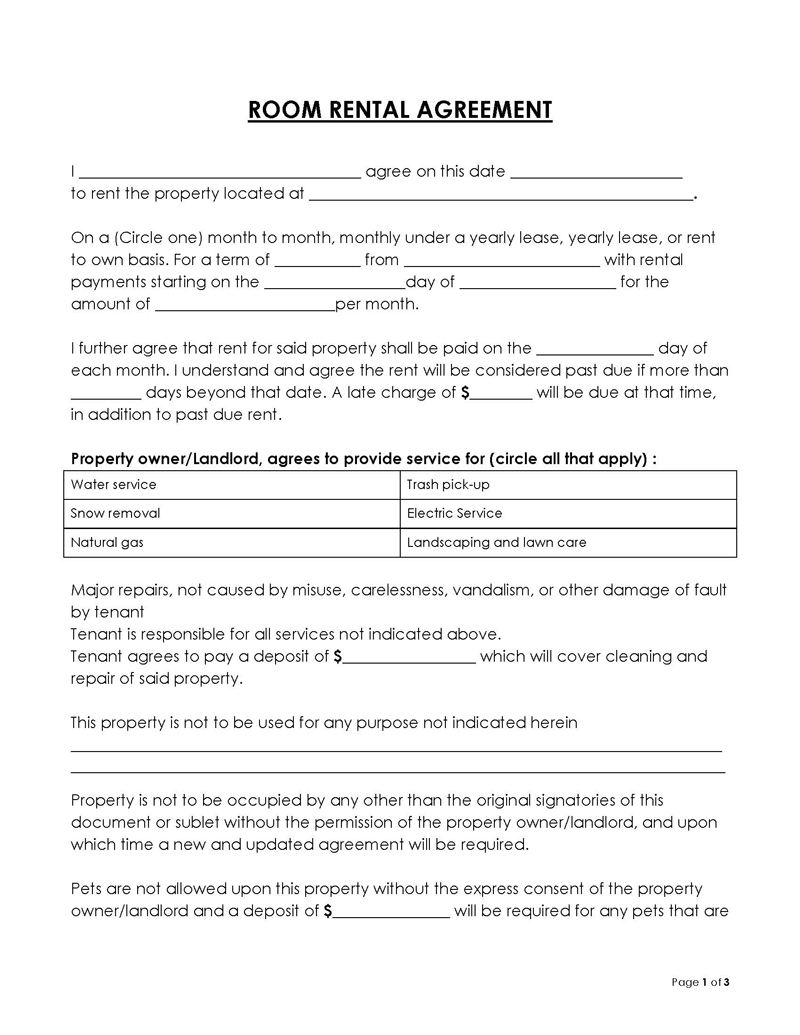
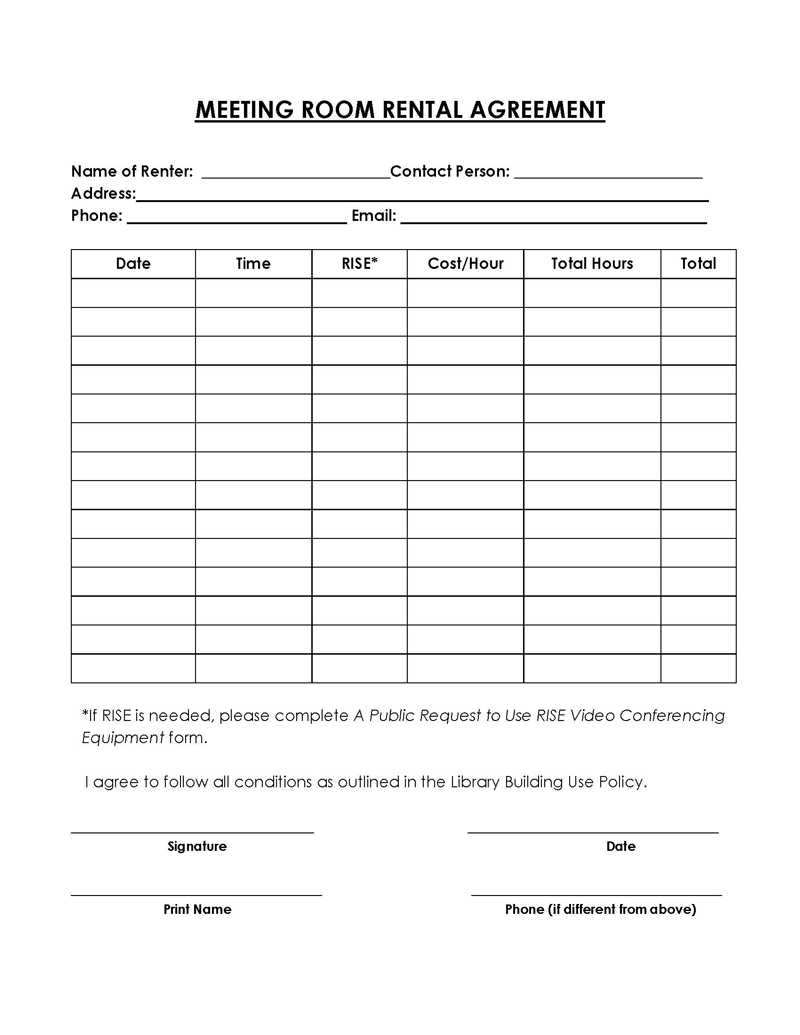
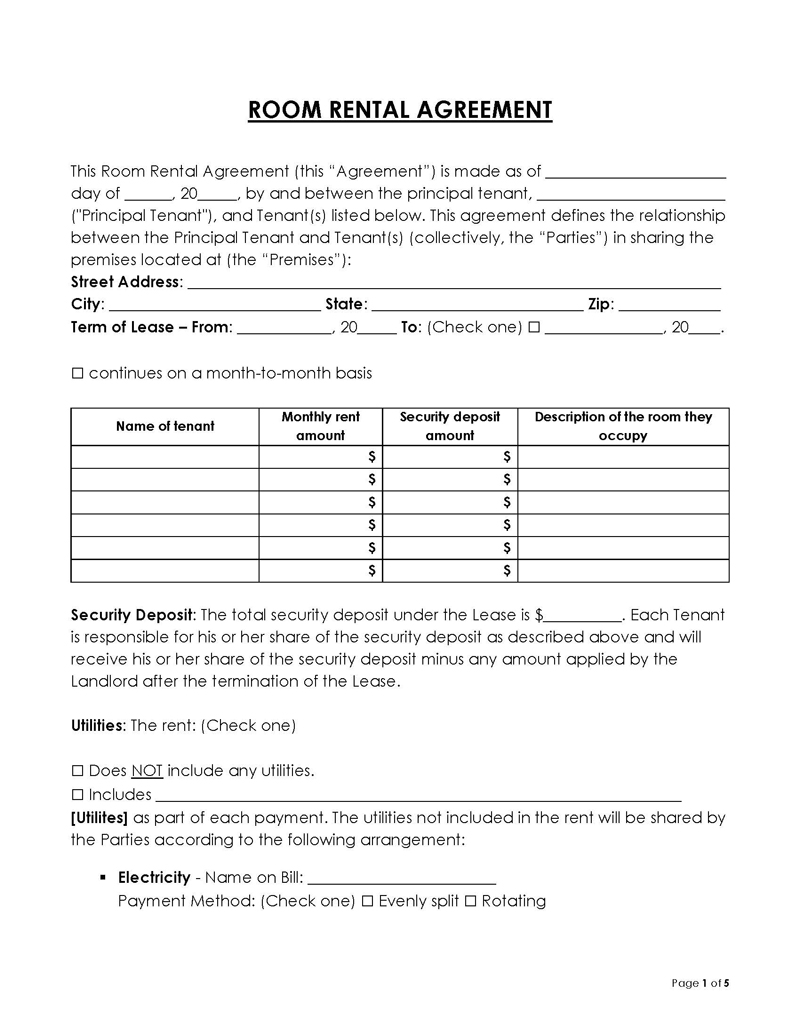
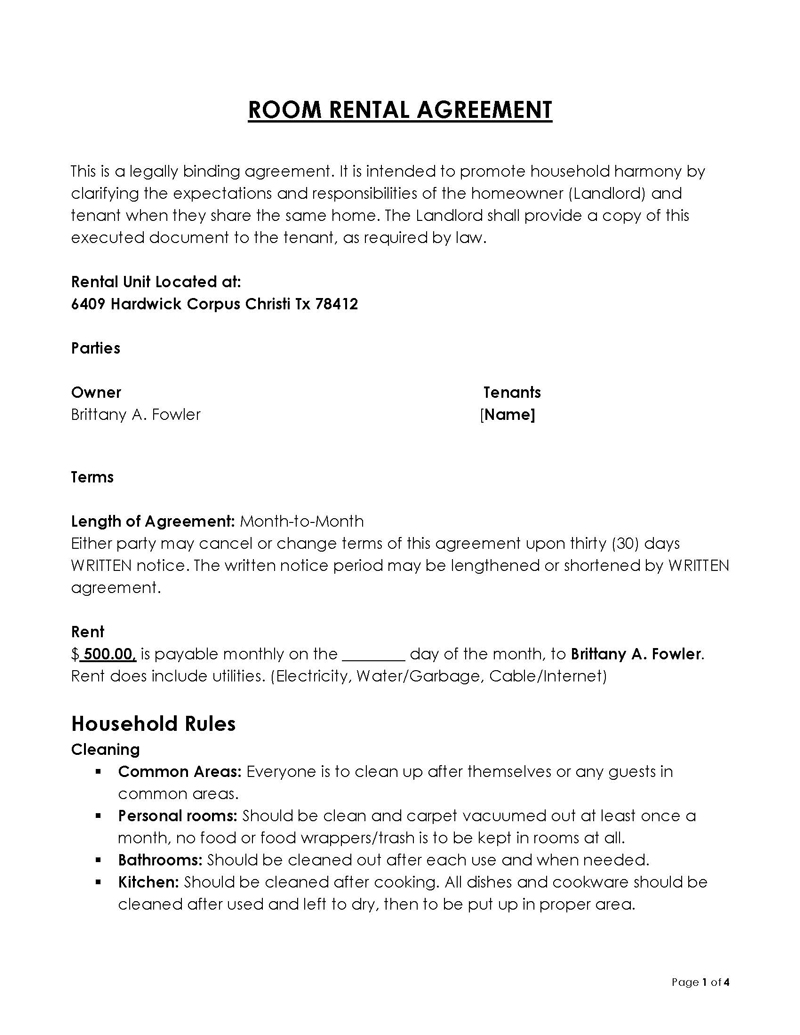
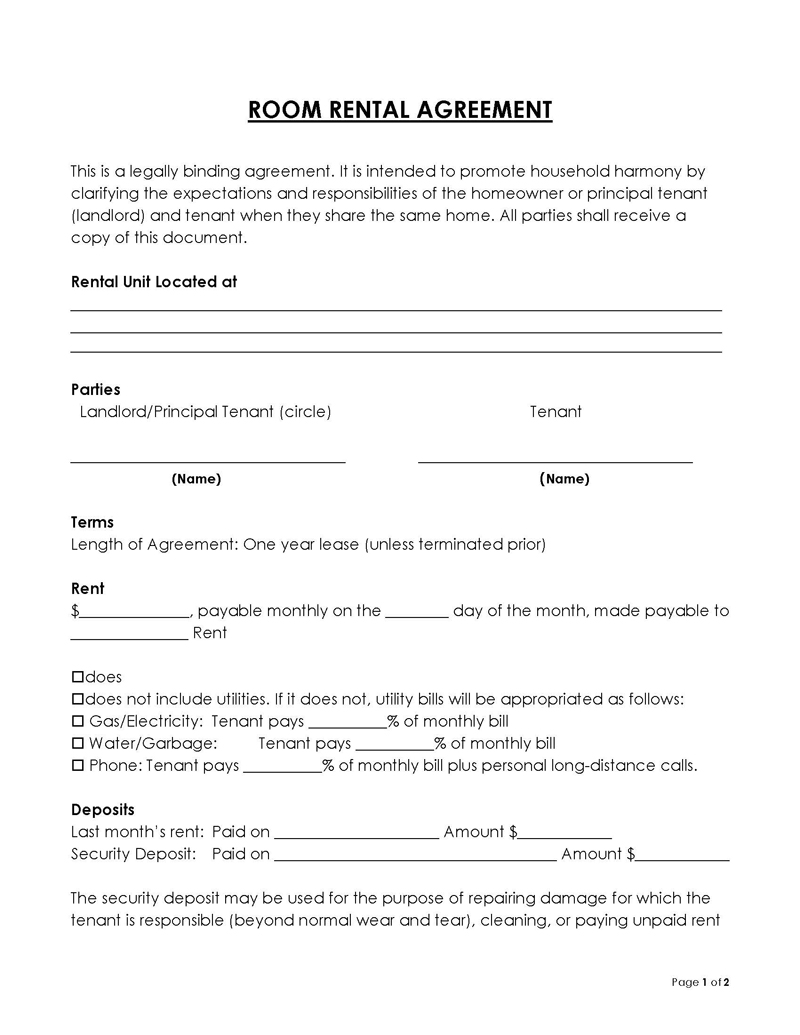
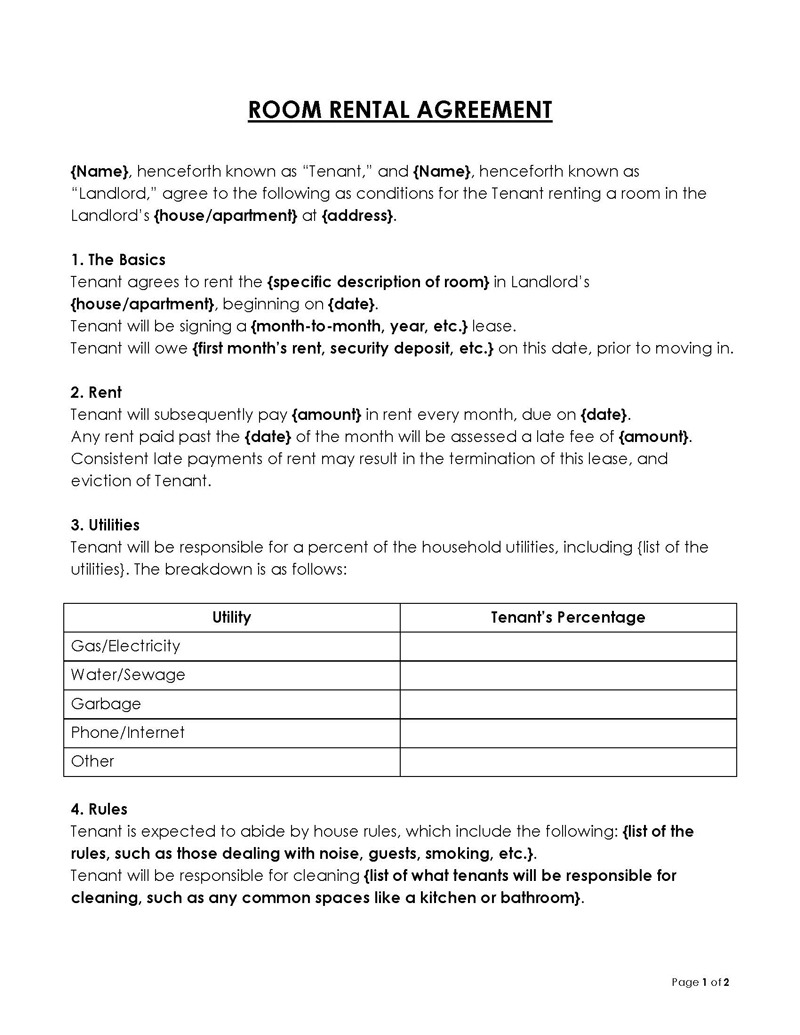
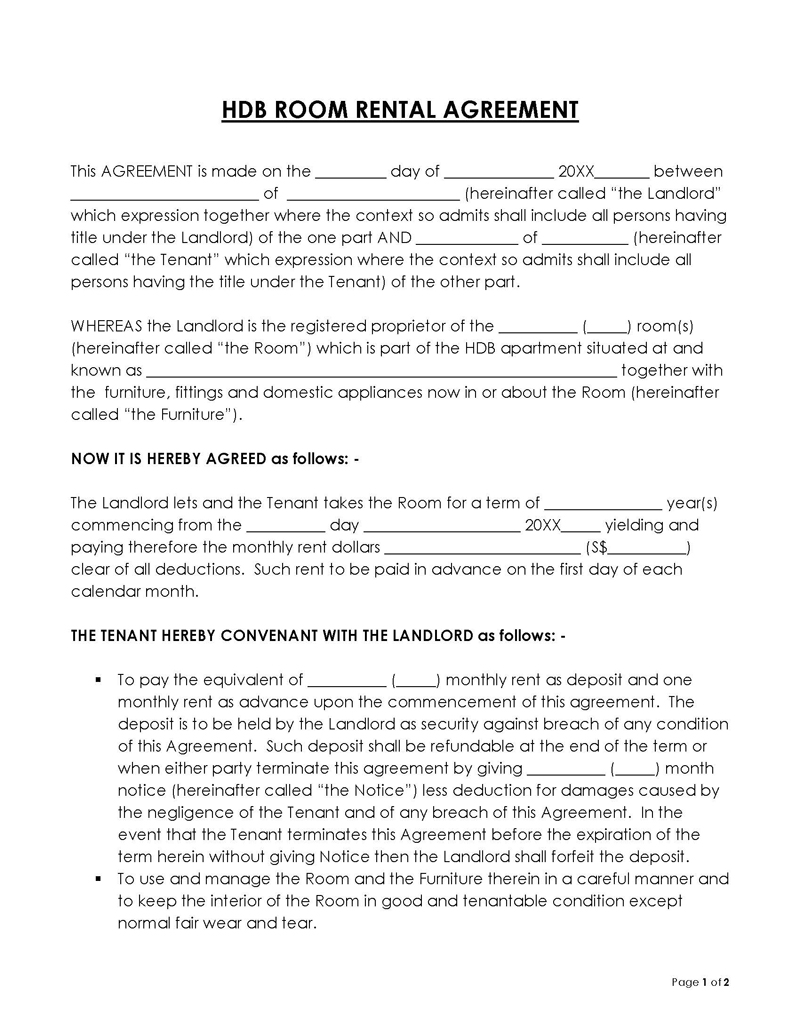
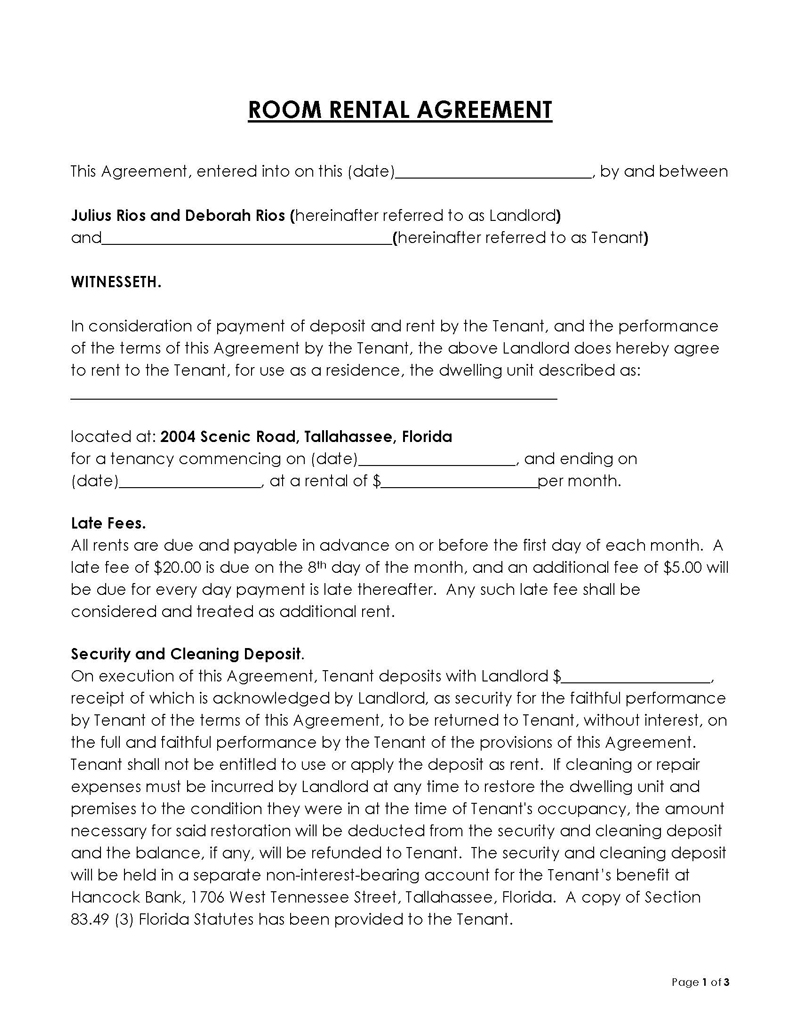
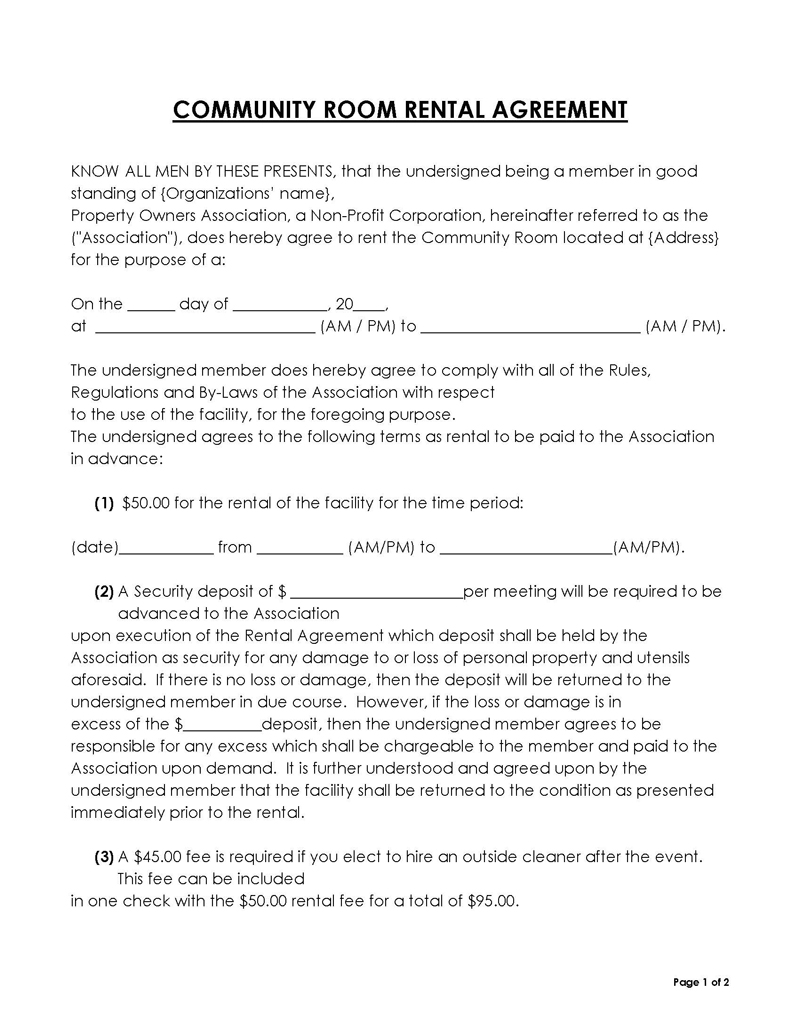
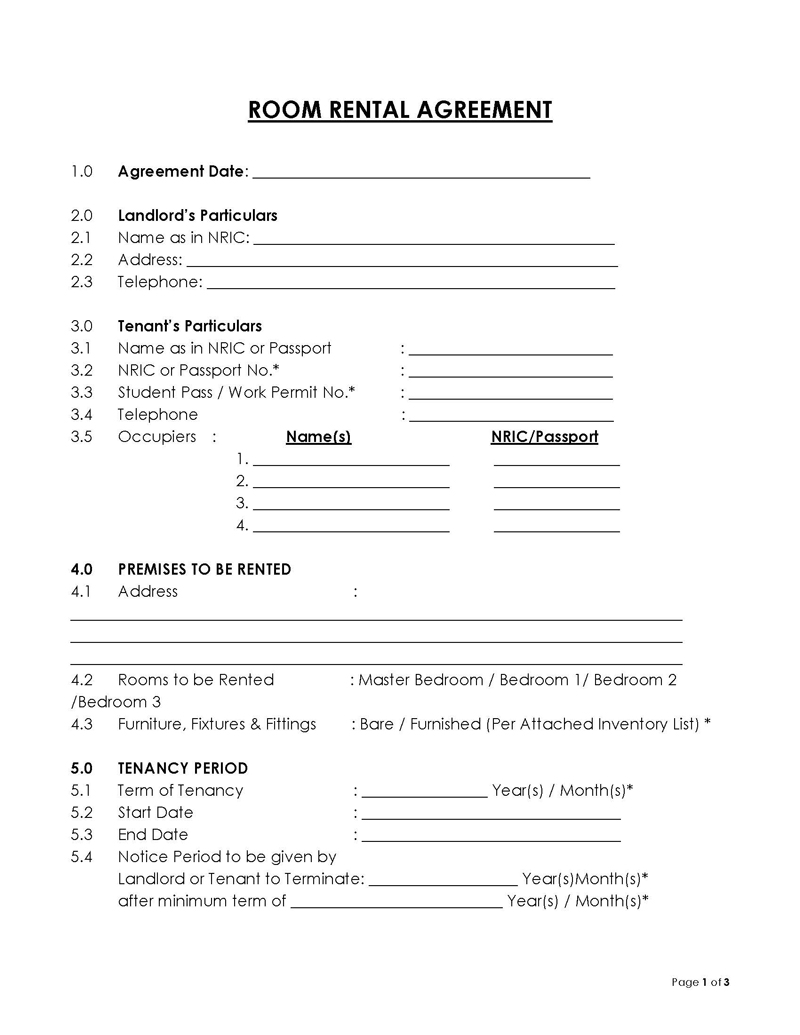
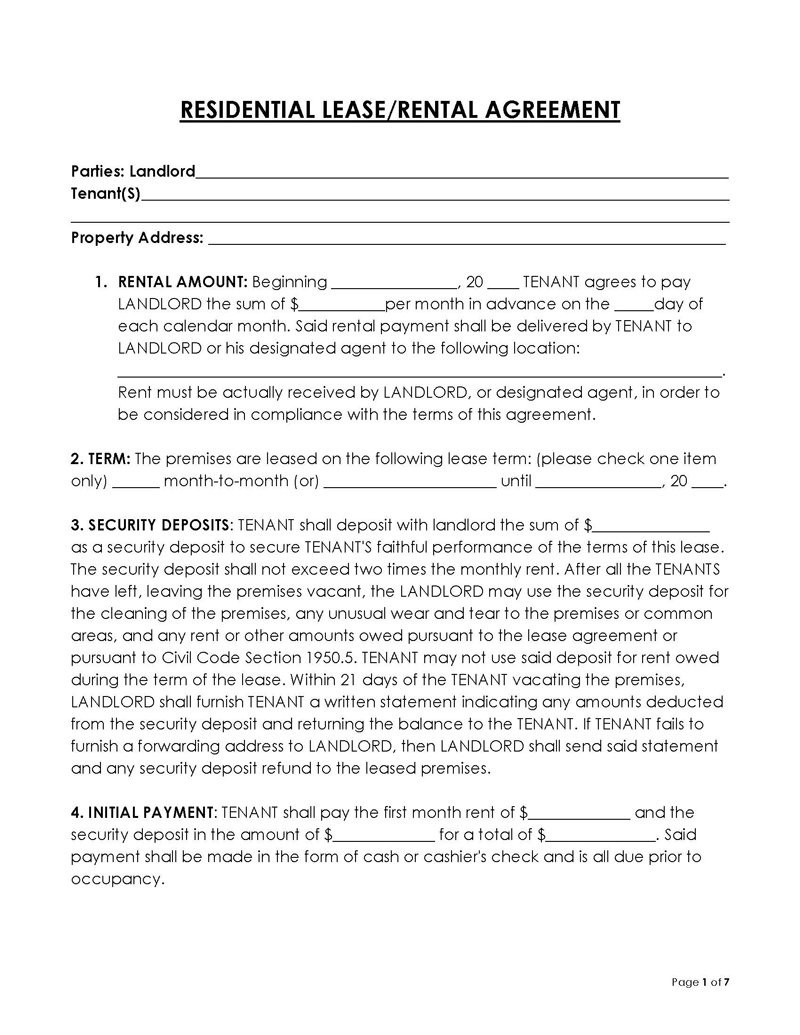
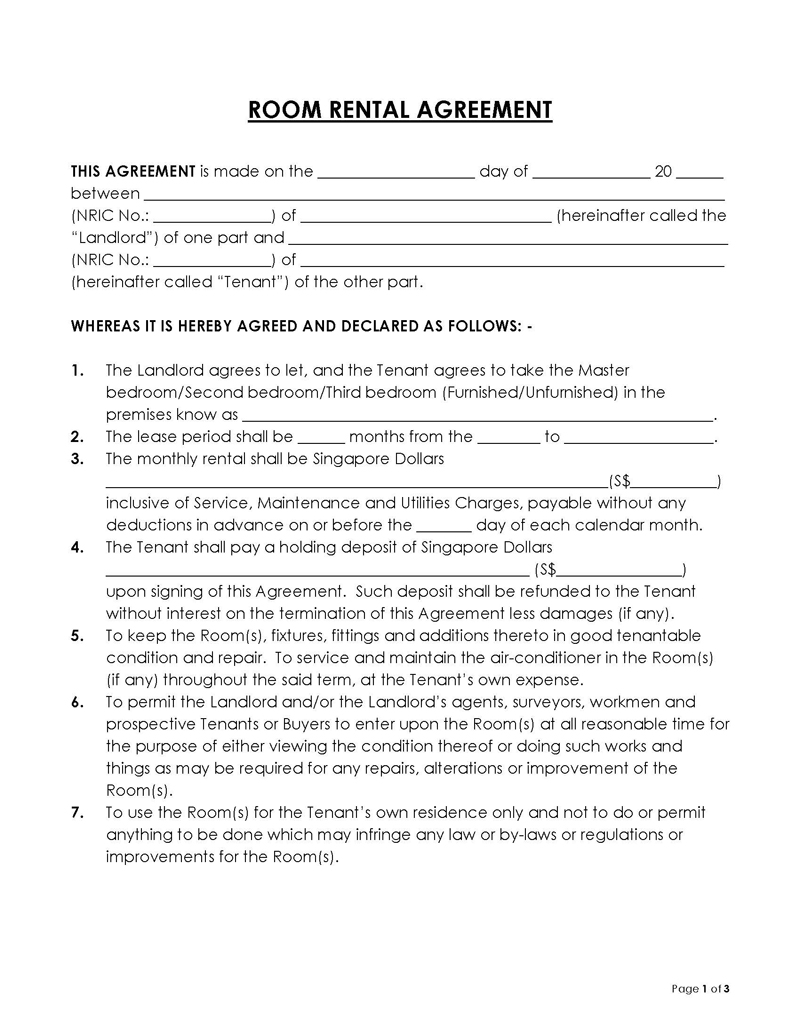
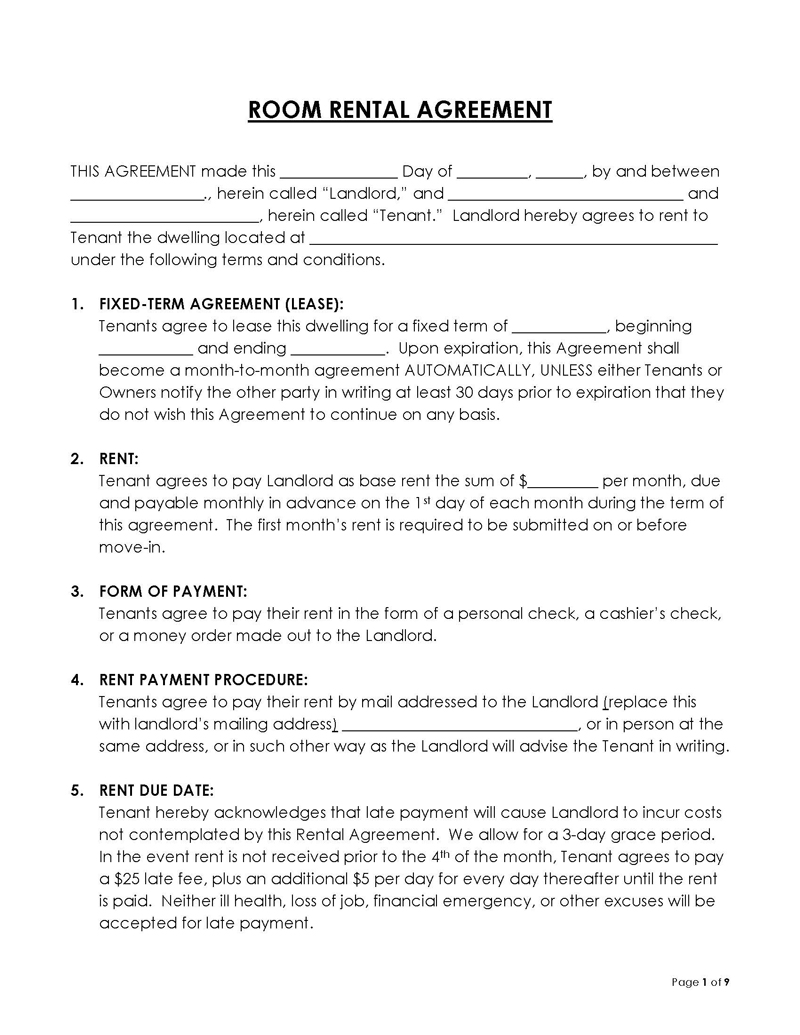
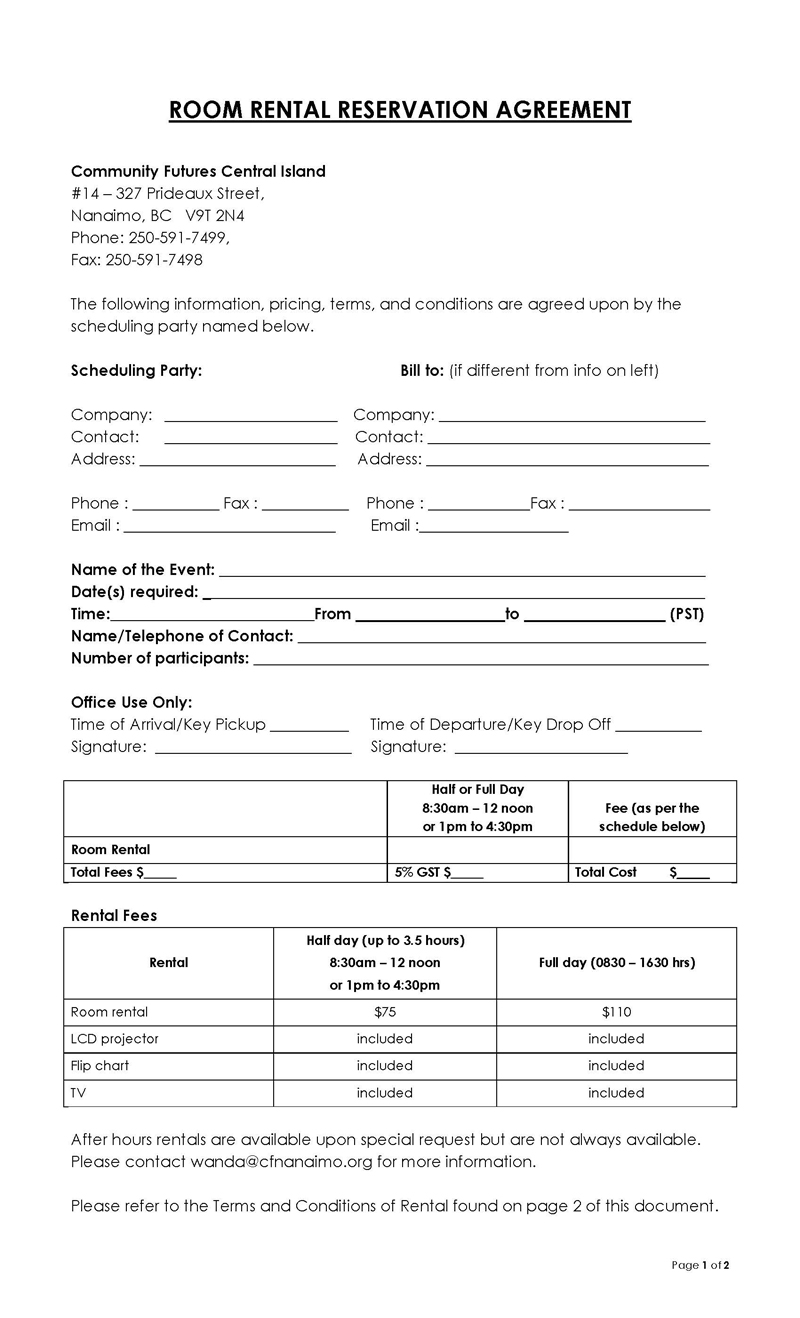
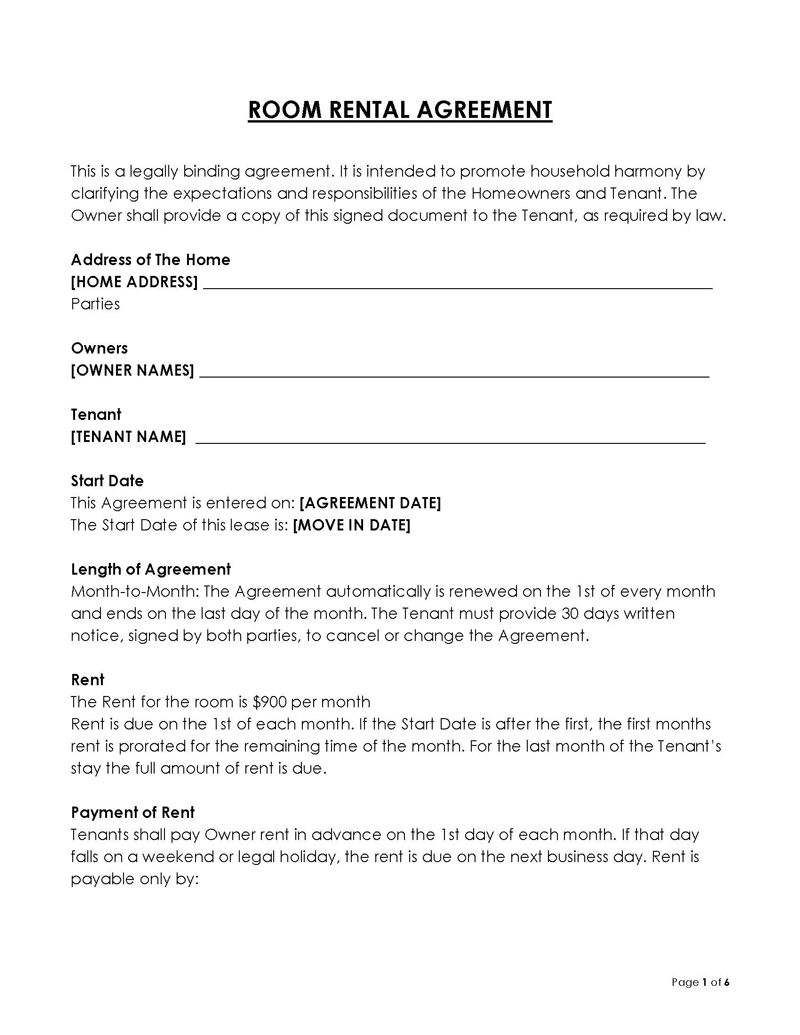
Difference B/W Room Rental Agreement and Roommate Agreement
A room rental agreement is different from a roommate agreement in several ways. Firstly, a room agreement is used when a tenant wants to sublet an extra or the entire space to a new tenant, and as a result, it is based on the original lease. Conversely, a roommate agreement is used when two individuals want to rent a space together as roommates. The roommates get to decide the terms of the agreement and their duties and responsibilities as co-tenants.
Room rental agreements often require the landlord’s approval, while roommate agreements do not as long as the roommates mutually agree on how to coexist.
A room lease agreement can be interchangeably used as a sublease. A roommate agreement is strictly meant for roommates and can sometimes be referred to as a roommate contract or housemate agreement.
When to Use a Room Rental Agreement
Using the agreement ensures that members occupying a house can anticipate and plan how to address different aspects such as rent, utilities, etc., and potential problems during tenancy. Also, a written agreement ensures that the terms and conditions of renting a room are not forgotten or misinterpreted; therefore, conflicts between the primary tenant and the new tenant are mitigated.
Below are circumstances that prompt the use of the agreement:
To set up boundaries
Boundaries between the primary tenant and a secondary tenant can be difficult to be defined unless defined in writing. The agreement can outline what is considered personal space and time and what is shared space and time.
When a roommate has guests coming over constantly
Roommates that have frequent visitations may cause excessive noise or disturbances. An agreement can be used to declare the time and/or days when guests and parties are allowed. This reduces conflicts among tenants living together.
To share household expenses and other costs
The agreements come in handy when distributing household expenses such as water bills, electricity, toiletries, cleaning services, etc. The division can be comprehensively stated in the agreement.
To divide basic maintenance duties
Tenants are normally responsible for various maintenance duties within the premises. When a primary tenant rents out a room or their entire space to a new tenant, it is best to discuss how maintenance duties will be shared and clearly specify the allocations in the agreement. Maintenance duties include mowing the lawn, shoveling the driveway during winter, cleaning the pool, etc.
To establish quiet hours
An agreement helps in designating quiet hours for each party while subleasing. Quiet hours are essential for living together.
What is Included in a Room Rental Agreement
A room lease agreement should include certain basic information that will be discussed in this article. Each agreement can, however, get into more detail depending on the scenario.
The basic items to be included in a room lease agreement are:
Date
The effective date of the document needs to be stated. If applicable, it can also state the end date, for example, if the primary tenant will be away for a specific duration or the new tenant needs to rent out the room for a specific period. The agreement can also be on a month-to-month basis.
Tenants information
Each tenant should provide their details in the agreement. This includes the name, address, and contact details. The parties should be identified as either “Principal Tenant” or “New tenant (sublessor).” Note that not more than 3 unrelated tenants can occupy the same property. If that’s the case, the property is classified as an HMO (House in Multiple Occupation) which attracts additional regulations.
Premises
The room’s premises should be described by indicating the physical address and accompanying details such as room, number of bedrooms etc. Square footage (space) for the additional tenant can also be given.
Rent amount
The agreement must state the agreed-on rent amount, payment schedule, and frequency amount. Applicable late fees also need to be declared along with associated terms and conditions.
Security deposit, if required
If a security deposit is needed, the agreement must state how much will be paid as a security deposit for the room being rented out. The due date for the security deposit also needs to be stated. The money is meant to cover damage to property at the time of moving out. Once received, it is deposited in a Government Authorized Tenancy Deposit Scheme within thirty days.
Optional rent increase
If necessary, the principal tenant can add a rent increase clause in the agreement to increase the rent if the property owner increases the rent during the tenancy. Rent increase is mainly seen in the tenancy of more than two years. Landlords are, however, required to make minimal and fair increments.
Obligations and duties
The basic and essential contractual obligations and duties of each party must be clarified in the agreement in order to avoid future disputes.
Utilities
Utilities such as electricity, water, and air conditioning cost money. Having one party assume all the expenses and responsibilities for utilities would be unjustified when both parties are using the same utilities. The agreement must therefore designate how utilities will be shared among the tenants.
Parking
Each tenant should be allocated a parking spot within the premises. It should be clear how many vehicles and parking spots will be designated for the new tenant.
Damages
The agreement must declare that the tenant is responsible for any damages caused by them or their guests. Also, it must state how damages that are not either party’s fault, such as normal wear and tear, will be shared between them.
Renter’s insurance
If the new tenant purchases the primary tenant’s insurance, the agreement must declare it. If that won’t be the case, it must also be clarified.
Smoking and alcohol use
Rules governing the use of cigarettes and alcohol within the property can be stated in the agreement. This includes the steps to be taken if the new tenant violates the rules and applicable fees.
Various permissions
The agreement should be clear on what the new tenant is permitted to do or have within the premises. For example, pets and parties will often require permission from the property owner.
Ending the agreement
The procedure for terminating the agreement should be defined in the agreement. Ordinarily, the landlord can terminate the lease with a written notice. Tenants, on the other hand, are restricted from ending the lease before the end date. This will usually attract a fee. The lease termination process will vary from one situation to the other.
Requirements under the Homes Act 2018 and the Tenant Fees Act 2019
The agreement should have declarations that state the room is compliant with the Homes Act 2018, and the tenancy is subjected to the Tenant Fees Act 2019. The homes act 2018 is meant to ensure that health and safety hazards are mitigated in rented properties, and thus the space is fit for human habitation. The tenant fees act 2019 prohibits landlords from charging tenants any fees other than those stipulated by the Act. Examples of fees prohibited are property viewing, administration charges, renewal/exit fees, etc.
Consequences of Not Using a Room Rental Agreement
Not using the agreement when renting out a room or an unoccupied apartment can result in various negative outcomes.
This article will highlight some of these outcomes below:
Losing money
Without an agreement in place, the tenant is not contractually obligated to cover certain expenses such as utilities, damages, rent, etc. Therefore, if the tenant doesn’t pay, the property owner covers the expenses, which means money that would have otherwise been saved is lost.
Wastage of time
Not using an agreement costs the landlord time in different ways. For example, since there is no clear procedure for ending the lease, the roommate can vacate at their convenience, forcing the property owner to spend longer than necessary looking for replacements. Also, without an agreement, conflict resolutions among cohabitating tenants take longer than necessary.
Damage to the property
Without clearly describing how boundaries should be respected, personal property or the premise’s property can be borrowed and never returned or, even worse, damaged. In addition, the cost of replacing the items falls on the property owner if there are no guidelines for handling such situations.
Strained relationships
Without an agreement to govern the tenancy, conflicts are bound to occur due to misunderstandings about responsibilities within the premises. This could result in a strained relationship between property owners and tenants as there is no legal way to compel the at-fault party to resolve the mistake.
Frequently Asked Questions
The agreement can be made to cover different tenants as long as each tenant is identified and their specific terms have been defined. Discrepancies of terms and obligations should be highlighted.
Yes. The agreement can either be week-to-week or month-to-month as long as the document specifies the lease type.
Ordinarily, a room rental agreement grants the tenant the authority to access and use the room they are renting. Additionally, it should allow them to access other shared or common areas such as the living room, kitchen, and bathroom.
Yes. The rental agreement can have a detailed list of items that come with the room and those the tenant is allowed to use. The condition of the items can also be recorded.
Certainly, a rental agreement is governed by the Tenant Fees Act 2019. Therefore, it must be compliant by excluding all the tenant fees that the Act prohibits.
Consult a lawyer if the new tenant intends to use the room for business or student/college accommodation. Also, cases, where more than one person intends to rent rooms within the same household, require the principal tenant to consult a lawyer.
The basic rent that should be charged is the market rental rate within that location. In some cases, laws may state that the principal cannot charge more than they are charged.





